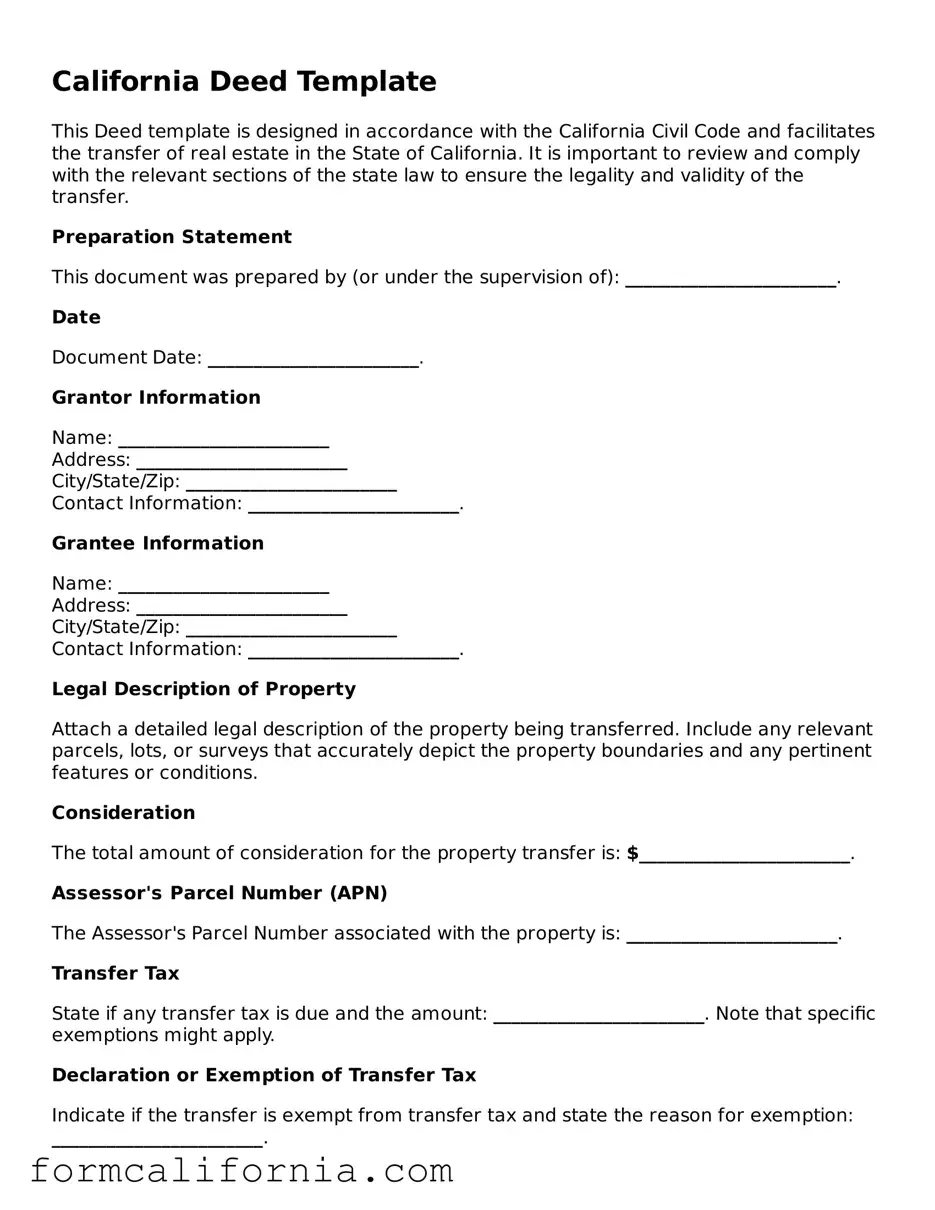California Deed Template
This Deed template is designed in accordance with the California Civil Code and facilitates the transfer of real estate in the State of California. It is important to review and comply with the relevant sections of the state law to ensure the legality and validity of the transfer.
Preparation Statement
This document was prepared by (or under the supervision of): _______________________.
Date
Document Date: _______________________.
Grantor Information
Name: _______________________
Address: _______________________
City/State/Zip: _______________________
Contact Information: _______________________.
Grantee Information
Name: _______________________
Address: _______________________
City/State/Zip: _______________________
Contact Information: _______________________.
Legal Description of Property
Attach a detailed legal description of the property being transferred. Include any relevant parcels, lots, or surveys that accurately depict the property boundaries and any pertinent features or conditions.
Consideration
The total amount of consideration for the property transfer is: $_______________________.
Assessor's Parcel Number (APN)
The Assessor's Parcel Number associated with the property is: _______________________.
Transfer Tax
State if any transfer tax is due and the amount: _______________________. Note that specific exemptions might apply.
Declaration or Exemption of Transfer Tax
Indicate if the transfer is exempt from transfer tax and state the reason for exemption: _______________________.
Signature of Parties
The Grantor(s) and Grantee(s) need to sign the Deed in the presence of a Notary Public to validate the document.
Notary Acknowledgment
A Notary Public must acknowledge the signing of this document. This includes:
- The date of acknowledgment.
- The notary's name and seal.
- A statement that the Grantor(s) appeared before them and signed the Deed.
Recording
After the completion and signing of the Deed, it must be recorded with the County Recorder's Office in the county where the property is located. Recording fees will apply, and the document must meet specific county standards for recording.
Witness Clause
The document should be witnessed by two individuals who are not parties to the transfer. Their names, addresses, and signatures should be included.
